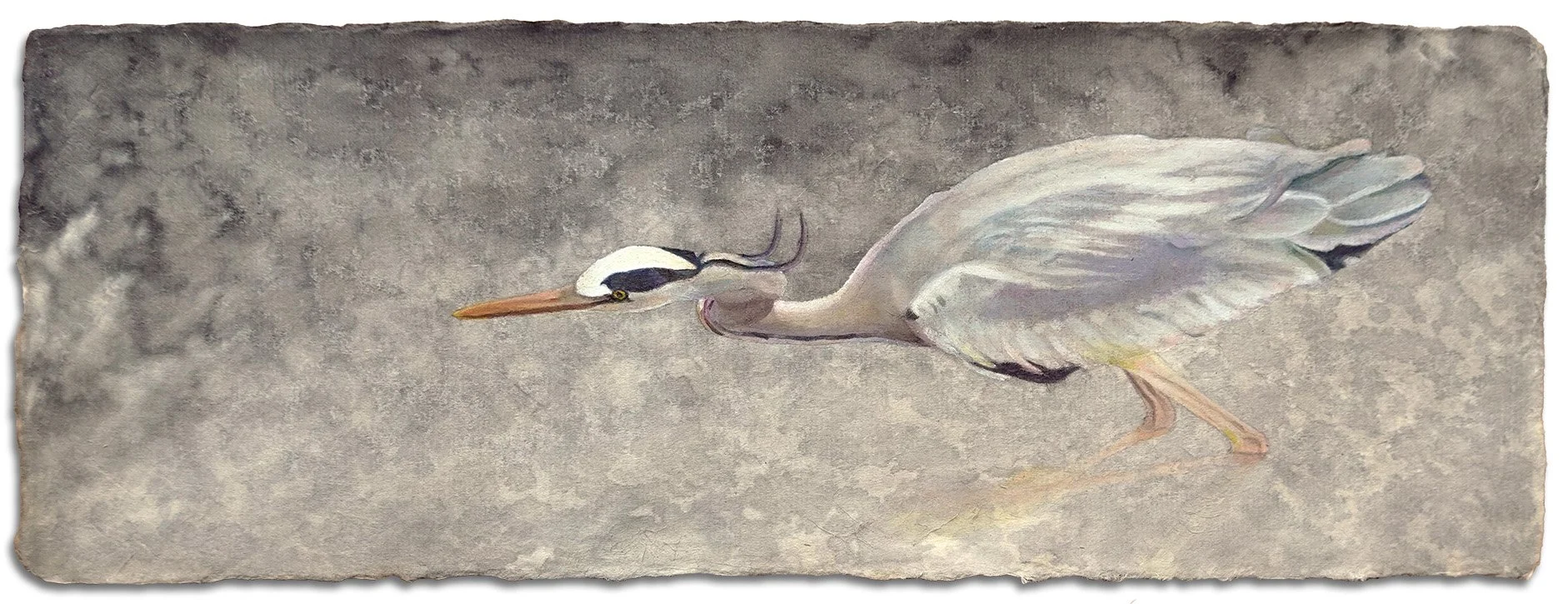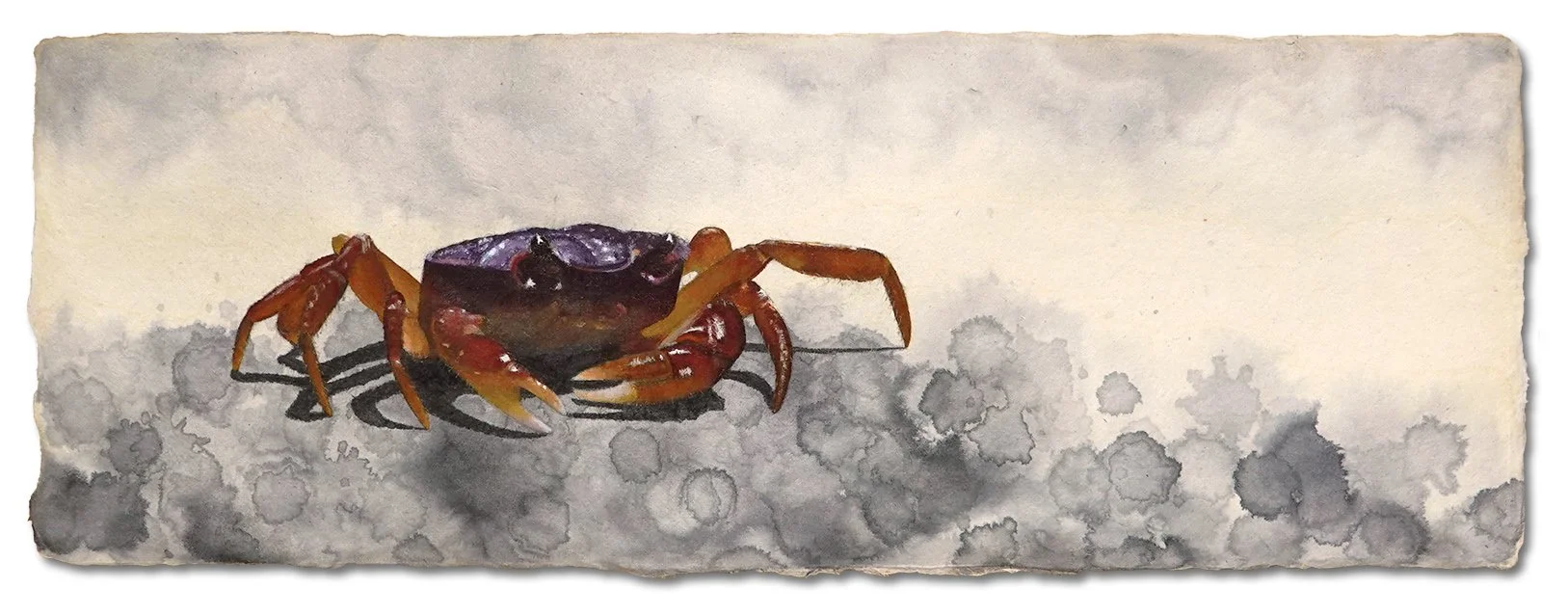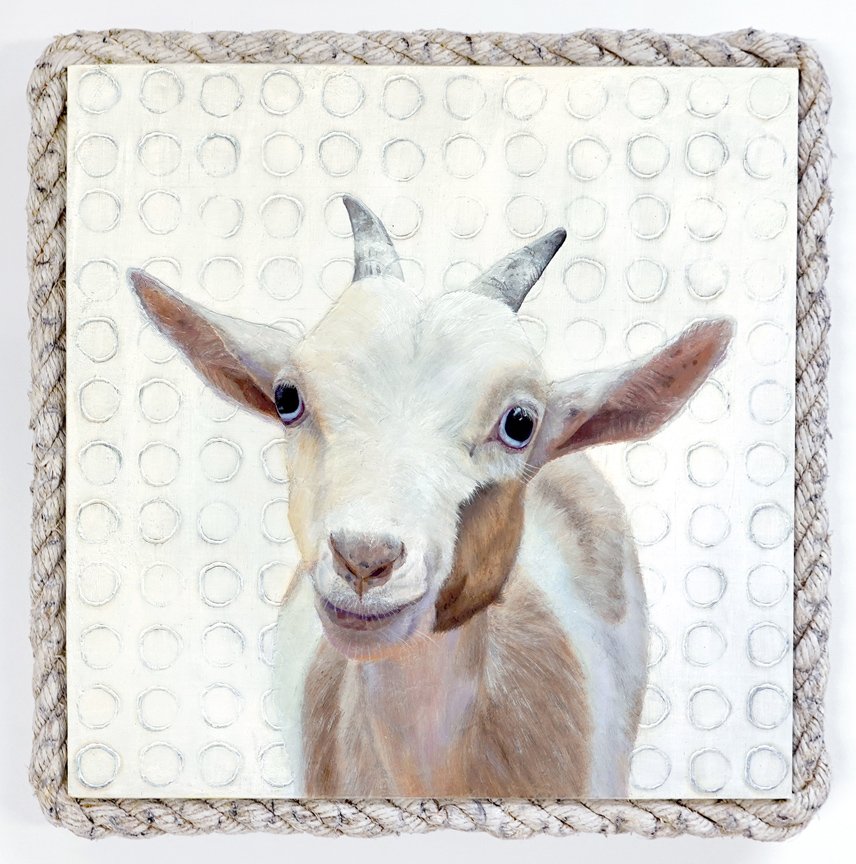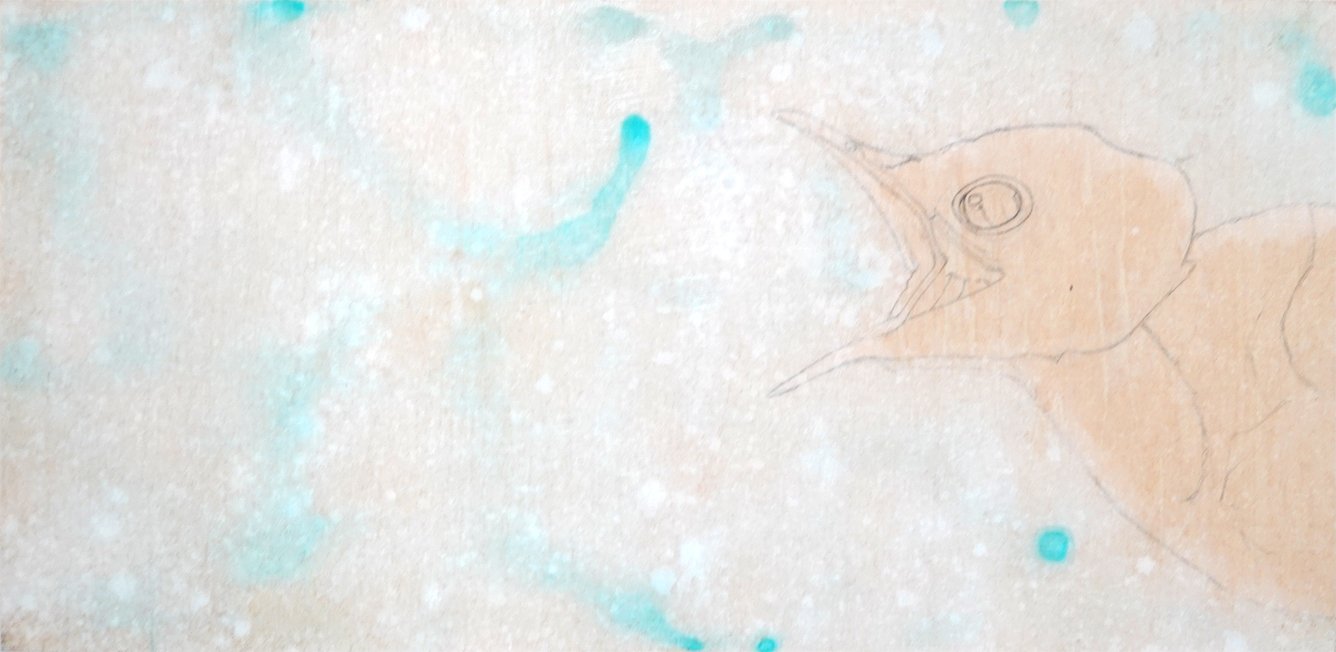I am so happy with how this overall project turned out! The tiles fought hard to keep their slick glass surfaces and people kept trying to persuade me to give up, but after a lot of failed attempts, I eventually prevailed in removing the top-most surface but leaving most of the glaze, crackle, and chip defects (and adding more defects of my own in the process).
From conception, I had planned on a nine-tile ceramic artwork and a five-tile-and-fragment ceramic artwork. One of the whole tiles ended up completely ruined while at the second sandblasting facility, so I was down to nine and four. I was initially pretty sure my nine-tile square artwork was going to be a tortoise, but I tried out a variety of compositions… and confirmed that a tortoise was my favorite option!
This project is exciting in that it is an experimental fusion between ceramics and painting, and it also uses as its substrate antique tiles from the 1840s. The multiple components means that I can display this piece in infinite ways; the “core composition” is of course the most resolved option but irregular spacing and/or scrambling encourages additional viewer appreciation for the artistry of each tile in its own right as well as introduces additional room for conceptual narratives around ecology, encroaching human environments into the natural world, negative space, abstraction, and time.
The subject is the larger, presumably male adult marginated tortoise I met on Mount Lycabettus - at least one group of locals call him Petros. When I was thinking about what to title this piece, I realized that marginated also means “marked or characterized by margins,” such that the word describes both the subject and substrate and therefore seemed to me to be the perfect title.
Marginated, acrylic on nine partially deglazed 19th century ceramic tiles, variable display dimensions with core dimensions of 16x16x.25", 2023.




























